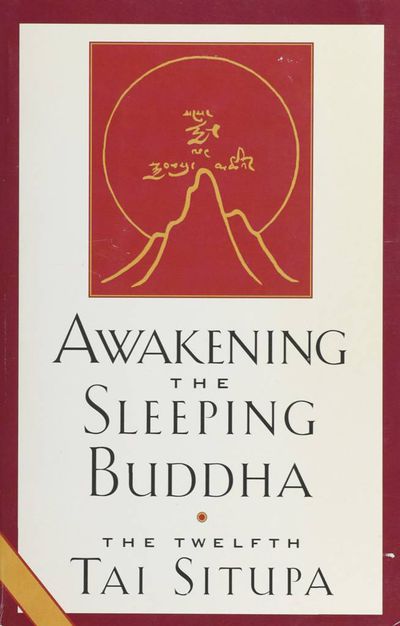(Created page with "{{Book |TileDescription=The great Karma Kagyu master, the Twelfth Tai Situ Pema Donyo Nyinje, discusses Mahayana Buddhist thought, focusing first on buddha-nature and bodhicit...") |
No edit summary |
||
| (4 intermediate revisions by 3 users not shown) | |||
| Line 1: | Line 1: | ||
{{Book | {{Book | ||
|TileDescription=The great Karma Kagyu master, the Twelfth Tai Situ Pema Donyo Nyinje, discusses Mahayana Buddhist thought, focusing first on buddha-nature and bodhicitta. | |TileDescription=The great Karma Kagyu master, the Twelfth Tai Situ Pema Donyo Nyinje, discusses Mahayana Buddhist thought, focusing first on buddha-nature and bodhicitta. | ||
|BookPerson={{Book-person | |||
|PersonPage=Tai Situpa, 12th | |||
|PersonName=Twelfth Tai Situ Pema Dönyö Nyinje | |||
}}{{Book-person | |||
|PersonPage=Terhune, L. | |||
|PersonName=Lea Terhune | |||
}} | |||
|FullTextRead=No | |FullTextRead=No | ||
|BookToc=*{{i|Introduction|vii}} | |||
*{{i|1 Buddha Nature|1}} | |||
*{{i|2 Bodhichitta |23}} | |||
*{{i|3 Reincarnation and Karma| 49}} | |||
*{{i|4 Emptiness |85}} | |||
*{{i|5 Tantric Science |107}} | |||
*{{i|6 Transformation| 123}} | |||
*{{i|7 Enlightenment |139}} | |||
*{{i|8 Mahamudra |153}} | |||
*{{i| Glossary |169}} | |||
|AddRelatedTab=No | |AddRelatedTab=No | ||
|StopPersonRedirects=No | |||
}} | }} | ||
Latest revision as of 11:20, 18 September 2020
This book is an attempt to clarify a few of the topics that come up most often in teachings and discussions of Mahayana Buddhist thought.
We begin at the beginning with buddha nature, because that is the most important concept to understand. Then, for the Mahayanist, comes bodhichitta. How the recognition of buddha nature is accomplished and the field in which we learn to practice bodhichitta is dealt with in a discussion of reincarnation and karma. Understanding emptiness brings us into a position to study Tantric science, of which the Mahamudra is an example of the highest form. It is through the practice of such Tantric sciences that we gain realization through the transformation they precipitate.
As the process of transformation moves forward, realization can come at any time or in any place. Realization itself has many aspects, leading to the highest realization that transcends subject and object, relative and absolute—all samsaric manifestations. Every moment of life, and the intermediate states between life and death and between sleeping and waking, are the means of attaining realization. Every mistake and every success leads gradually to the ultimate goal. The ultimate goal of Buddhist study and practice is, of course, the state of being completely purified, the enlightenment of a buddha. (Source: introduction).
| Citation | Tai Situpa, 12th (pad+ma don yod nyin byed). Awakening the Sleeping Buddha. Edited by Lea Terhune. Boston: Shambhala Publications, 1996. |
|---|---|


